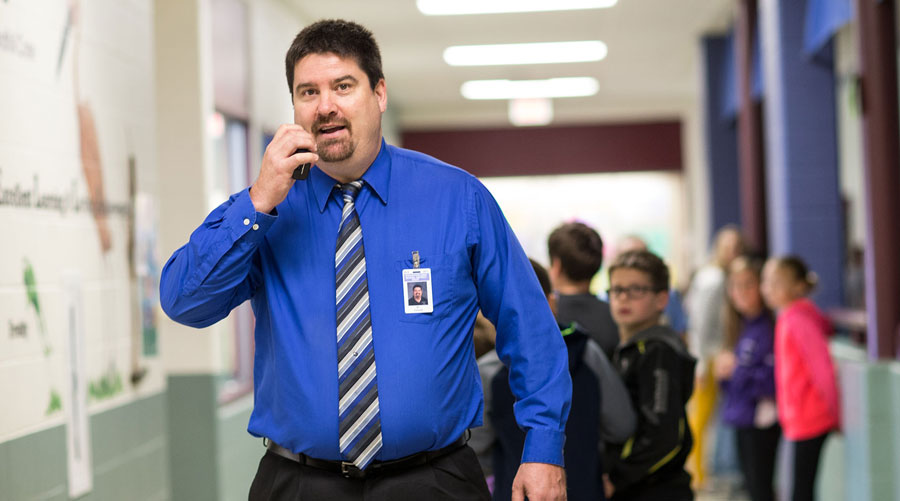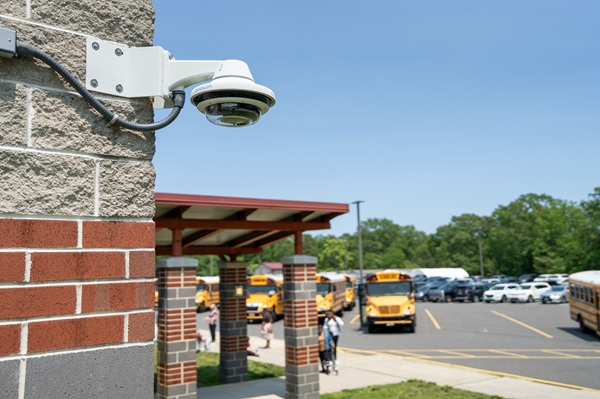Discussing ways to address a high school mental health crisis is a difficult subject because, despite many mainstream news sources raising concerns about deteriorating student mental health during the COVID-19 pandemic, the data used to support the concerns is often unreliable, taken out of context, or contradictory.
Undoubtedly, mental health issues exist among high school students – but they always have. Most children have not had sufficient life experiences that enable them to cope with change; and, as long ago as the 1940s and 1950s, child development psychologists identified that the failure of children to cope with change can manifest as anxiety, which can develop into a mental health disorder.
The work done by child development psychologists more than half a century ago has shaped the way in which the current generation of students is generally better prepared for change; and, although modern-day life experiences may be different, the three most common causes of anxiety in students remain the same – separation anxiety, social anxiety, and irrational anxiety (phobias).
What’s prompted the current volume of student mental health concerns is that, when the COVID-19 pandemic forced the mass closure of high schools, every child simultaneously experienced a change they were not prepared for. Consequently, rather than students’ separation, social, and irrational anxieties being distributed over the school year, they all developed at the same time.
Quantifying the Scale of the Mental Health Crisis
Quantifying the scale of the mental health crisis is difficult because data used to support claims of worsening student mental health are most often self-reported. Studies into the reliability of self-reported data relating to mental health have found discrepancies of up to 30% between perception and reality; and, with there being a strong likelihood that school-aged children don’t understand the difference between feeling sad and feeling anxious, the discrepancy could be far greater.
It is also impossible to quantify the scale of the mental health crisis by the number of students seeking mental health counseling. Following the 2018 Parkland shooting, hundreds of millions of dollars were invested in hiring more school counselors, increasing the number of school psychologists, and training teachers on recognizing signs of anxiety. Consequently, the increase in students seeking mental health counseling is likely attributable to more counseling being available.
A further consideration with regards to the increasing number of students seeking mental health counseling is that, since the start of the COVID-19 pandemic, most counseling services have moved online. This has enabled students who may not otherwise have sought counseling due to self-stigma and disclosure expectations to reach out for help. It may also be the case that, by hosting counseling sessions virtually, counselors are able to host more virtual sessions than in-person sessions.
Determining the Nature of Student Mental Health Disorders
The difficulty in discussing how to address a high school mental health crisis is further compounded by concerns about mental health being taken out of context or crises reports contradicting each other. For example, while any teenage suicide is a distressing event, reports of teenage suicides being on the increase due to the COVID-19 pandemic are often taken out of context. A national ER study of teenage suicide ideation and attempts before and during COVID-19 found no increase at all.
In respect of crises reports contradicting each other, one widely-read education website reported within a week that students were both “increasingly relying on schools for mental health support” and “not taking advantage of counseling center services”. While it may be the case that students are approaching teachers with their mental health concerns more than counseling centers because they have more trust in their teachers, the reports are not helpful in determining the extent of the crisis.
Therefore, before even attempting to address a high school mental health crisis, schools and school districts need to quantify the scale of the mental health crisis in their areas and determine the nature of student mental health disorders so that appropriate resource can be directed to helping students most in need. Ideally it would also be helpful to establish:
- Whether students are developing mental health disorders at a faster rate than before the COVID-19 pandemic started,
- Whether students with previously unreported mental health disorders are experiencing more severe symptoms due to the COVID-19 pandemic, or
- Whether a perceived increase in COVID-related mental health disorders is attributable to students transferring existing anxieties from (say) coursework to COVID-19.
Mental Health Crises in K-12 Children
As schools transition back into in-person classes, it’s clearer than ever that the coronavirus pandemic affected school-aged children. From 2019 to 2020, mental health-related doctor visits for children aged 5–11 and 12–17 years increased by approximately 24% and 31%.
In just the first three quarters of 2021, there were 47,000 mental health emergency visits at 38 children’s hospitals around the U.S. – nearly 40% higher than the same period in 2020. Those crises — and emergency visits — are only expected to rise. In 2021, only 27.3% of youth experiencing a mental health crisis received consistent treatment (7-25+ visits in a year scale), whereas 59.6% of youth struggling similarly received no treatment at all.
While each child’s mental health crisis has its own causes, many experts believe the pandemic — and rising instances of school violence — has exacerbated many of these issues. Students experienced separation, which brought out social anxieties. Uncertainty affected households at record levels, and abrupt changes due to lockdown affected schedules, routines, and plans.
Then, there’s also the issue of school safety. In 2021, there were 14 school shootings over a four-month span — the highest since 1999. On top of that, in the first 7 months of 2022, there were a total of 27 reported school shooting incidents. As children navigate uncertainty and anxiety in today’s world, it’s important to understand the consequences of unaddressed mental health crises and find new solutions.
Consequences of mental crises in children
Treatment delays
When discussing mental health amongst children under 18, it’s important to recognize that intervention is key. While mental illness may not be preventable in some cases, treatment can help these kids grow to thrive in life. In fact, many adults with mental illness or who’ve had mental health crises wish they’d had support sooner.
Unfortunately, untreated or unaddressed mental health crises can lead to an increased risk of school failure, crime, and suicide in adults.
Lack of access to care
The CDC reported that many children within this age group receive mental health services through schools, so as schools shut down kids were either redirected to emergency services, or their crises went unaddressed. Worse than that, a 2021 statistic shows that 901,000 youth in the U.S. have no insurance coverage for behavioral health services.
How to support children during mental health crises
Before attempting to address a child’s mental health crisis, schools, school districts and communities need to quantify the scale of the mental health crisis in their areas.
This will help allocate appropriate resources and ensure that children, teens and their parents or guardians get the support they need hopefully before a crisis occurs.
K-12
In order to improve and slow the rate of mental health crises in children and adolescents, more of an effort needs to be placed on support and resources in the school. Since not every child has insurance or access to mental health care, providing that onsite in school is incredibly important. This can range from guidance counselors to functional needs registries so faculty can check in on high-risk students.
State and local levels
Providing more funding at the state and local level for comprehensive, community-based systems that exist outside of schools can offer families in need of behavioral/mental health services more options for treatments. There is also a lot of value in creating better 9-1-1 access through tools like panic buttons and increased resources for response teams and emergency operators.
Tools to Help Establish Where Mental Health Services should be Prioritized
Despite the hundreds of millions of dollars invested in student mental health services, schools are still under-resourced with regards to supporting every student’s mental health. Fortunately there are tools that can help schools quantify the scale of a mental health crisis, determine the nature of mental health disorders, and establish where mental health services should be prioritized. One of the benefits of these tools is that they use a use a communication channel most students prefer.
SMS text messaging platforms with polling capabilities enable schools to send daily text messages to students enquiring about their mental health. The content of the text messages is tailored in a Q&A format so that students can respond to the questions by pressing a number on their mobile keypads. The questions need not be intrusive into students’ state of mind and can be sent on a year-by-year basis so they are age appropriate. An example of how this might work could be:
1) Has your concentration today been affected by a lack of sleep?
- A1. No. I slept well last night.
- A2. No. Is there a problem with my concentration?
- A3. No. I didn’t sleep well, but I don’t think it has affected my concentration.
- A4. Possibly. I had a really bad night.
With the exception of A1, the remaining three answers could be indicators of anxiety; and although individually, the questions and answers may not indicate a student mental health issue, the text messaging platform can be configured to automatically send a follow-up message depending on the answer given to the initial message. For example, in response to “Possibly. I had a really bad night” a follow-up Q&A could enquire:
2) What was the cause of your bad night?
- A1. Don’t know.
- A2. Too hot/too cold.
- A3. Ate later than usual.
- A4. Stuff going on in my head.
The answers to each text message are recorded on the message platform along with a list of students who have not replied to the Q&A poll. Schools need to determine how they respond to the different responses and non-responses based on their knowledge of the individual students, but the opportunity exist to automatically send further Q&As to students who replied “Stuff going on in my head” to determine exactly what “stuff” is keeping the student awake at night.
Anonymous Tip Texting Can Also Alert Schools to Mental Health Issues
Students with mental health disorders often wave red flags as their condition deteriorates. These red flags may be verbal conversations with other students, social media posts, signs of withdrawal, or other indicators they are struggling to cope. By providing an anonymous tip texting service, schools encourage students to share concerns they have about their peers with those who can provide support to struggling students and prevent the condition further deteriorating.
Similar to text messages platforms, anonymous tip texting services collate reported concerns so schools can prioritize student assistance according to the number of anonymous reports they receive or the nature of the reports. Anonymous tip services that also support photo and video messaging can be vital in assessing whether a student mental health event has the potential to deteriorate into an emergency with an immediate threat to life or harm to others.
Critical communication can improve mental health for kids
When it comes to improving the mental health of our children, intervention is key. That starts with better mental health care and access, as well as better support in the midst of a crisis.
This is a community-wide effort; it goes beyond just the child’s home. That’s why it’s critical that school districts and communities create resources and leverage tools that help reduce time from the onset of a mental health crisis to a child’s care.
To support a school district’s or community’s need for more mental health, consider implementing critical communication tools that allow for emergency notifications, real-time reporting and two-way communication.
Rave Panic Button, for example, offers an emergency safety app and other Mass Notification Resources to help instantly notify schools, communities and emergency services of a child in crisis. For more information on how the Rave Mobile Safety Suite can help you reduce childhood mental health crises in your community or district, learn more about our K-12 solutions.





Comments are closed here.